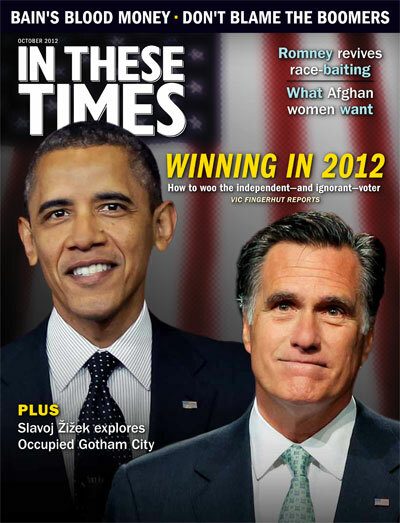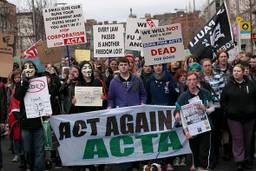
What is the value of delight, or joy, or a space where people come together?” asks Paul Chasan, an urban designer with the city of San Francisco. Chasan helps manage the city’s Pavement to Parks program, which promotes communal outdoor culture in underutilized urban spaces by creating “parklets” — miniature parks snuggled into one or two roadside parking spaces.
Parklets can range from a simple platform with metal tables and chairs to a collection of whimsical sculptures and horticultural landscapes. Since the program began in 2009, San Francisco has installed more than 35 parklets, and the trend has spread to other cities, from Long Beach to Boston.
Parklets arose out of a subversive intellectual movement that asks us to fundamentally alter our view of urban space — specifically, of the immense portion of most North American cities taken up by streets and sidewalks. Blaine Merker, cofounder of San Francisco art and design studio Rebar, says the idea for the first parklet was conjured up over beers out of a desire to find alternative ways to use these common spaces that in a sense, belong to all of us.
That desire manifested itself in a 2005 temporary art installation called PARK(ing). The artists at Rebar bought two hours on a parking meter in the SoMa district on a sunny November day, and proceeded to roll out grass sod, a bench and a planted tree in the parking spot. When the meter ran out, they packed up and went home. A single photograph made its way online.
By the following year, the group had received so many requests from around the world to do similar installations that they created a how-to guide and established PARK(ing) Day. In 2011, parklets were installed in 162 cities on six continents.
This year, PARK(ing) Day falls on Friday, September 21. The event’s manifesto reads:
“Stripped of commercial adornment, the ‘generous’ public act foregrounds its own assumptions: it says, this is possible, and it need not be bought or sold. … As these individual moments begin to aggregate within people and across populations, we hope to see the emergence of a broad-based critical examination of the extraordinary transformative potential embedded in these tiny niches within the urban ecosystem.”
“There’s all sorts of value hidden in this stuff,” says Gordon Douglas, a sociology graduate student at the University of Chicago who is studying what he calls “DIY urban design”: informal and illegal modifications private citizens make to improve public spaces. This goes beyond graffiti and street art into more substantive and practical interventions, such as painting bike lanes, installing public seating and creating guerilla gardens. “I don’t think that it’s some radical resistance to the city or authority,” says Douglas. “It’s more that these individuals feel that they can take it into their own hands to make the improvement as they see the need.”
Douglas places PARK(ing) Day within the context of the larger DIY urban design trend. While there are still individuals out there pushing the boundaries of the street, the overall event has become much more accepted and officially condoned.
In fact, as it has grown, the parklet movement has struggled to stay true to its mission to imagine noncommercial, inclusive alternatives to the way we currently inhabit the city. In San Francisco, each parklet is sponsored by a private organization — a non-profit, a coffee shop, a Pilates studio — that agrees to shoulder the costs as well as responsibility for installation and maintenance.
At its best, a parklet serves as a democratic, communal and inviting space. It is another point of contact within the community, where people can see one another, lounge, and start conversations without any of the obstructions or obligations of commercial exchange that often define “public” spaces. At its worst, a parklet appears as an extension of the latest with-it coffee shop on the block, tying public interaction back to the economic sphere.
Sensitive to this, San Francisco’s Pavement to Parks program works hard to make its parklets appear noncommercial and open to the public. “Over the course of time we’ve learned a lot about what makes a good space and what doesn’t work so well,” says Chasan. “A lot of our design controls are about trying to maintain a public-feeling space.” Parklets in San Francisco aren’t allowed to have company logos or advertisements, and must have different seating than what the sponsoring institution uses. No ketchup bottles are allowed on the tables. Umbrellas, which tend to give the impression that the space is private, are frowned upon.
Nevertheless, city officials in San Francisco, Chicago, New York, Long Beach, Philadelphia and Vancouver, Canada, all discuss parklets in terms of economic development. In most cases, the parklets are either tied to a specific restaurant, store or group — as with the San Francisco permitting process — or otherwise are at least situated on a commercial strip. Last summer in San Francisco, the car company Audi paid close to $1 million to install a cluster of parklets near Union Square. Frederick, Md., a town of 66,000 people, is one of the newest comers to the parklet phenomenon, allowing two restaurants to install parklets as extensions of their patio seating this summer.
“It’s a delicate line that I think is being walked here,” says Rebar’s Merker. “There’s an inherent tension in asking the private sector to provide the kind of public amenity we wish we had.”
The city of Chicago installed four parklets this summer, all located in neighborhoods with a young demographic and rising real-estate values. They are funded by non-profits, sometimes with the help of commercial district taxes, and overseen by neighborhood economic development councils.
Meanwhile, as a consequence of people literally up and leaving Chicago for the suburbs — 200,000 in the last decade — the city is dotted with an estimated 80,000 empty lots, concentrated in the low-income South and West sides. The city, which owns 14,000 of these vacant lots, could easily give shared ownership to neighborhood residents, allowing them to adapt the land to the specific needs of the community. One frequent such need is parkland: The Chicago Tribune reports that half of Chicago residents live in park-poor neighborhoods, with less than the city’s self-imposed minimum of 2 acres of park per 1,000 people. But instead, the lots mostly sit as overgrown and unused sores, while Chicago’s trendy neighborhoods are afforded parklets.
When we talk about urban policy, we hear a lot about jobs, healthcare, education, taxes. But what about the way we interact with each other, the way we form community?
Parklets are both figuratively and literally a small deal. Yet these sorts of spaces and policies are the exact things that add up to make neighborhoods and cities what they are, for better and for worse.







